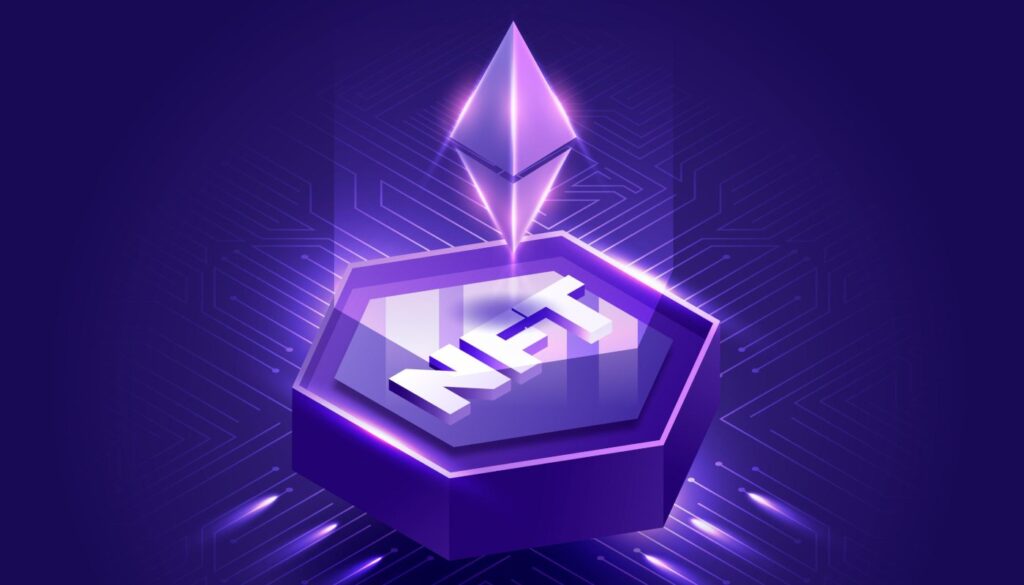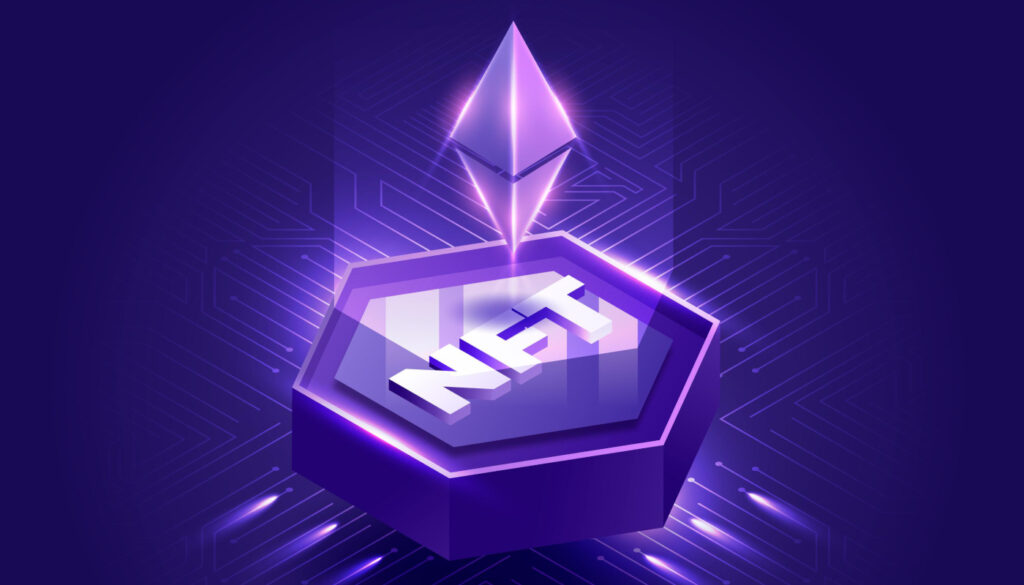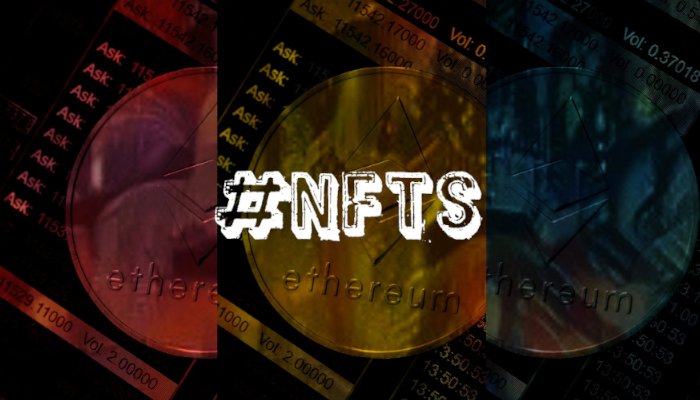Where do NFTs actually come from? A short history of non-fungible tokens

If you have been following the latest news, you’ve surely heard of the hype surrounding non-fungible tokens (NFTs). In many ways, 2021 was the Year of NFTs. It was an unprecedented ascent that gave creators the ability to monetize their work easily and provided collectors with an efficient way to purchase and store value. While NFTs seem like they arrived out of nowhere, they do, in fact, trace back to 2012.
Early history: 2012-2016
NFTs on Bitcoin?
While many people nowadays associate NFTs with the Ethereum blockchain, the reality is that the concept has been around long before Ethereum existed.
Colored Coins 2012
On Dec. 4, 2012, a paper was released by Meni Rosenfeld that introduced the concept of “Colored Coins,” issued on the Bitcoin blockchain. Colored Coins describe a class of methods for representing and managing real-world assets on top of the Bitcoin blockchain and can be used to prove ownership of those assets. They are basically regular Bitcoins, but with a mark on them, that determines their use.
Read more: What exactly are NFTs? Understanding the world of non-fungible tokens
For instance, imagine you have four different bank accounts, and you want to assign a use-case to each one. Say that there’s a bank account for saving, one for bills, another for gambling and one more for college savings. The money then becomes segregated and unique.
Even though the concept of Colored Coins was never realized, due to the limitations of Bitcoin, it laid the groundwork for further NFT experimentations in the future.
Who created the first NFT? 2014
On May 3, 2014, Kevin McCoy, a digital artist, minted the first-known NFT “Quantum.” Quantum is a pixelated octagon filled with different shapes that pulse in a quite hypnotic way. On November 28. 2021, the one-of-a-kind Quantum art piece sold for over $1.4 million in a Sotheby auction.
2014-2016
During those years, a significant amount of development and experimentation has taken place in platforms built on top of the Bitcoin blockchain. It was the start of Ethereum’s initial reign over NFTs. Most notable is the Counterparty platform (Bitcoin 2.0), which allowed the creation of digital assets. Later on, Spells of Genesis followed Counterparty’s footsteps and through its platform pioneered issuing game assets. Finally, the meme age began in 2016, with the release of Rare Pepes NFTs on the Counterparty platform.
However, it should be noted that it was never intended to act as a database for these alternative tokens. Many Bitcoin users didn’t like the idea of filling precious block space with tokens that represented ownership of images. That was the beginning of the shift for NFTs to the Ethereum blockchain.
NFTs go public: 2017-2021
NFTs find a better home on Ethereum
With the introduction of the Ethereum blockchain in 2014 and its platform going live July 30, 2015, a new age for the NFTs began. The Ethereum blockchain introduced a set of token standards that allowed the creation of tokens by developers. In brief, the token standard is the subsidiary of the smart contract standard. For the blockchain that supports the smart contracts, the token standard is often included to tell people how to create, issue and deploy new tokens, which are based on their underlying blockchain.
Cryptopunks 2017
Following the success of the Rare Pepes, John Watkinson and Matt Hall decided to create a generative project on Ethereum. No two characters generated would be the same, limited to 10,000 pieces. The project’s name was Cryptopunks and is the only project that used the ERC-20 to launch (ERC-721 wasn’t introduced yet), although many people in the NFT space call it a hybrid of the ERC-20 and ERC-721 standards. Now combine the historical value and scarcity with the NFT surge in 2021 and you can understand why Cryptopunk NFTs are sold for such prices. One even hit the $530 million mark, making it the highest NFT sale yet.
CryptoKitties: 2017-2018
CryptoKitties is a blockchain-based virtual game that allows players to adopt, breed and trade virtual cats from the safety of your own wallet. It was released by a Vancouver-based company called Axiom Zen and was introduced during the world’s largest hackathon for the Ethereum ecosystem. With over 400 developers attending, it was the perfect place to introduce the game. This project went viral soon after. It was so popular that people were making crazy profits trading those cats. Also, the activity was so high that CryptoKitties clogged the Ethereum blockchain in general, which made it even more prominent. After witnessing this activity, people began to realize the true power and potential of NFTs.
NFT gaming: 2018-2020
Between this period and moving forward, NFTs slowly but surely caught public attention, most certainly through NFT gaming and metaverse projects. The first to enter this space with its decentralized Ethereum-based VR platform was Decentraland (MANA). In Decentraland, gamers can explore, build, play games, collect items and more. Imagine Minecraft, but whatever you build, find and earn there, you own as well.
Soon after, platforms and games with Enjin Coin (ENJ) started emerging, a blockchain-based platform that allows developers to tokenize in-game items on Ethereum. With the use of ENJ, it can back those items with real-world value. Likewise, Axie Infinity (AXS) surfaced, a blockchain-based trading and battling game that’s partially owned and operated by its players. All those platforms were in development through the crypto-winter (bear market) and under the radar of many people. That is until 2021 came and NFTs went mainstream.
What the future holds: 2021
The NFT explosion 2021
In 2021, interest in NFTs increased. Other Blockchains such as Cardano, Solana, Tezos, Flow, etc. started getting into the game with their own version of NFTs, establishing new standards to ensure that the digital assets represented are authentically one of a kind. Specifically, at the beginning of the second quarter of the year, the buying surge was so astonishing that the mainstream media often called for a huge bubble that’s about to burst. Likewise, the fourth quarter showed a significant surge in NFT demand, especially in the metaverse field just after the announcement of Facebook renaming itself as Meta and moving to the metaverse as well.
2021 and beyond
The history of non-fungible tokens is much longer than most people realize. As we start moving from an experimental era to the mainstream, the future holds endless opportunities. Despite the massive growth that we recently experienced, I believe that this space is still young, and growth will only continue. In fact, I believe that the NFT space will grow as more and more people realize the impact that NFTs can have in most of our current fields.
DISCLAIMER: THIS IS NOT FINANCIAL ADVICE. Please do your own research and consult with professionals when making any investments.
Header image created by pikisuperstar.
The post Where do NFTs actually come from? A short history of non-fungible tokens appeared first on Alternative Press.
Link to the source article – https://www.altpress.com/features/history-of-nfts-non-funfible-tokens/
Recommended for you
-
Jackson JS Series Concert Bass JS2, Satin Black, Amaranth Fingerboard
$299,99 Buy From Amazon -
Epiphone MM-30S “A-Style” Mandolin
$219,00 Buy From Amazon -
Yamaha YDP184 Arius Series Console Digital Piano with Bench, Dark Rosewood
$2.399,99 Buy From Amazon -
Vangoa Pink Violin Set, 4/4 Full Size Acoustic Violin Fiddle for Beginners Adults Kids Violin Starter Kit with Hard Case, Rosin, Shoulder Rest, Violin Bow, Extra Strings, Mute
$109,95 Buy From Amazon -
TUOREN Gold Bugle Cavalry Trumpet Brass Instrument for School Band Cavalry Beginner Military Orchestra W/Carrying Bag
$28,99 Buy From Amazon -
Nuvo jSax – Black
$119,99 Buy From Amazon -
Seismic Audio – Enforcer II PW – Powered PA 18″ Subwoofer Speaker Cabinet 1200 Watts
$0,00 Buy From Amazon -
Alesis Turbo Mesh Kit â Electric Drum Set With 100+ Sounds, Quiet Mesh Drum Pads, Drum Sticks, Connection Cables, Drum Lessons
$299,98 Buy From Amazon














Responses